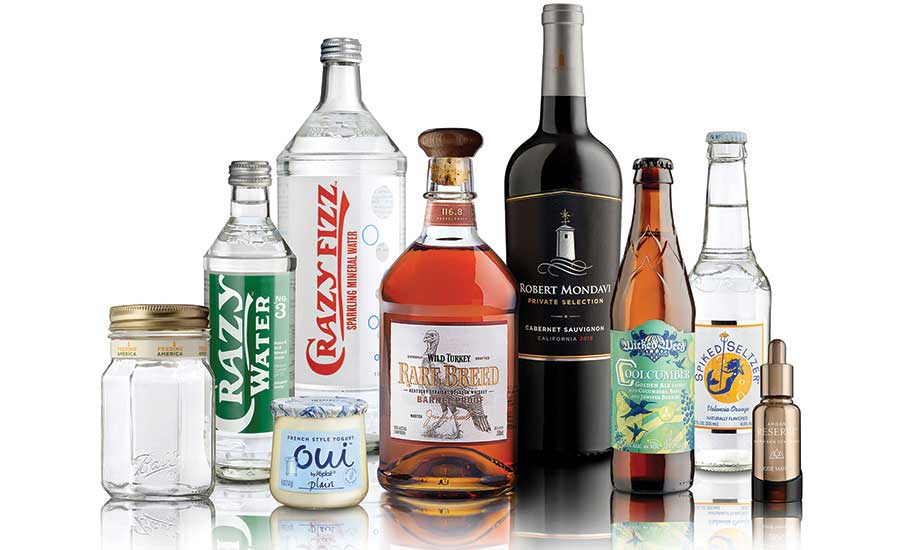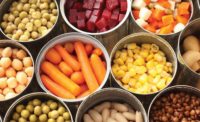Cover Story
Packaging Outlook 2018: Glass Packaging Overview
This report is an excerpt from the 2018 Packaging Outlook Report, featured in Packaging Strategies NEWS.

Research on consumer sentiment shows that glass packaging is well positioned for taste, health and sustainability.
Photo credit: Glass Packaging Institute
The glass container industry’s key indicators in North America generally remained stable in 2017, with opportunities for growth in 2018 in the premium and craft spirits and wine segments, food, and non-alcoholic beverages. Consumers continue to see glass as best for taste, an eco-friendly package, and superior for creating premium and specialty experiences.
Executive Summary
- Glass bottle shipments for spirits increased 6 percent in 2017, and ready-to-drink flavored alcoholic beverages grew 8 percent.
- While beer remains the largest segment, changing market trends have left the beer market slightly down from 2016 numbers.
- U.S. shipments of glass containers was approximately 28 billion bottles and jars in 2017.
- Imports and exports of glass containers increased by double digits in 2017.
2017 surveys showed that, again, 90 percent of consumers favor glass to preserve and protect the flavor or taste of food and beverages.
Shipment and production data collected and aggregated by Precision Consulting (precisionconsultingcompany.com) show the U.S. glass container industry will have shipped around 28 billion containers to customers in 2017, a slight decrease from 2016. This reflects small reductions in consumer spending in the beer and food categories.
Spirits and Ready-to-Drink Alcoholic Beverage Containers
Shipments of bottles for liquor and other distilled spirits containers increased across the past five quarters, including a 6 percent rise (77 million containers) in 2017, signaling continued demand for glass-bottled premium spirits. Reinforcing this strong market in the alcohol beverage space, glass container shipments of ready-to-drink beverage coolers and cocktails increased by 8% (78 million containers) in 2017.
Beer
Beer remains the largest market segment, representing 56 percent of the glass container industry’s sales volume in 2017 (a drop of 1 percent in share from 2016). Shipments of beer bottles to customers are down slightly, reflecting a decrease of 2 percent in overall U.S. brewer volume for 2017. However, data from the Beer Institute (beerinstitute.org) still highlights strong global demand for beer, including a 3.5 percent growth for imported (filled) glass bottles in 2017.
Wine, Food & Beverages
Shipments of wine containers have increased over the past five quarters, representing 8% of the glass container packaging mix in 2017. Containers for food products accounted for 18% of the industry’s volume, followed by non-alcoholic beverages (9%). Liquor increased its share by 1%, now accounting for 5% of the overall glass packaging mix.
Imports & Exports
Imports and exports of unfilled glass containers increased by double digits in 2017. Through November, imports of glass bottles and jars rose 10.9 percent, while exports grew 29 percent. Imports of wine bottles met the expanding demand from the West Coast and wineries around the U.S., while exports of beer and other non-alcoholic beverage containers reflect the high demand for glass packaging outside the U.S.
Glass Manufacturing Facilities
New North American glass manufacturing facilities are planned over the next few years. Saverglass (saverglass.com) expects to open a facility and decoration workshop in Mexico in 2018 to service the tequila, wine and rum markets. O-I (o-i.com) will add a fifth furnace to their facility in Nava, Mexico. And Arglass (arglass.us), a new entrant to the glass manufacturing market, intends to open its first plant in Valdosta, Ga., in 2019. Due to a shift in production focusing on glass containers for food and spirits, however, Ardagh (ardaghgroup.com) announced the March 2018 closure of its Milford, Mass., beer bottle plant.
GLASS MARKET TRENDS
Many of today’s market trends influencing food and beverage packaging present strong opportunities for glass containers. Consumers continue their desire for healthy, sustainable, premium products, and glass packaging delivers.
Consumers still rank glass packaging No. 1 for taste. A 2017 EcoFocus Worldwide (ecofocusworldwide.com) survey of U.S. consumers found, again, that 90 percent favor glass to preserve and protect the flavor or taste of food and beverages. When consumers were asked to rank the positive health impact of packaging for foods, 55 percent have a clear preference for glass over all other packaging types, with cans at 30 percent and plastic bottles 18 percent.
Glass is also an ideal package for healthy beverages, a growing market category. The EcoFocus survey found that two in three (66%) consumers said glass has a strong fit with healthy beverages. This also reflects a shift in the non-alcohol beverage market toward natural and organic products, which saw total U.S. retail sales up 11 percent in 2016 over 2015.
Glass is a natural choice for the health-conscious consumer who values high-quality ingredients and freshness. For example, Oui by Yoplait, introduced in 2017 and one of General Mills’ most successful U.S. product launches, consists of simple ingredients in glass pots. Glass is the only package type that protects the delicate product texture necessary for this style of yogurt. It also allows consumers to see the color and layers of the product inside, setting it apart from traditional yogurt containers.
As premiumization grows in all categories, and especially wine and spirits, glass containers are front and center. In fact, the vast majority of new products launched in beer, wine, and spirits each year are in glass containers. As millennial consumers focus on new tastes and experiences through a bubbling cocktail scene, they are backing away from beer and moving to more cannabis, wine and spirits products.
Glass packaging is helping brands rise to top-of-mind. Design attributes and innovation only possible with glass packaging offer exceptional product differentiation for wine and spirits brands. Glass bottles with thick bases, embossing and decoration work together with label designs to present a harmonized, high-quality image that offer shelf presence and can best convey the brand and product story.
To recognize top new products packaged in glass and introduced in the North American marketplace, the Glass Packaging Institute annually holds its Clear Choice Awards.
Entrants are judged by a distinguished panel of designers, brand marketers, and packaging specialists for their achievements in building a distinctive glass packaging design with strong shelf impact. Winners in eight categories were recognized in October 2017 during a ceremony at the Packaging That Sells Conference in Chicago, Ill.
HEALTH AND SUSTAINABILITY
The desire for sustainable packaging is a value that continues to be high on consumers’ list of priorities. And a growing number say glass is most eco-friendly. The 2017 EcoFocus survey found that when consumers were asked to rate beverage containers on their “green or eco-friendly” credentials, glass came out on top with 51 percent of consumers rating glass extremely or very eco-friendly.
Consumers are also turning away from food storage options that may have negative health impacts in favor of glass storage and serving containers. There is no plastic or chemical liner in glass bottles to migrate into food and beverages.
Glass is also ocean-friendly. Because glass bottle and jars are primarily made from sand, they don’t harm oceans or marine life. Glass bottles are completely recyclable, safe and non-toxic. Plus, recycling programs for glass bottles and jars are available to 81 percent of the U.S. population. The Glass Recycling Coalition, under the leadership of the Glass Packaging Institute and CPG members, has made significant strides during 2017 to improve both the quality and amount of glass that is recycled each year.
The glass container industry, with 45 glass plants and 59 cullet processors in 29 states, is committed to fostering an efficient recycling system that can produce a high volume and quality of recycled glass. Recycled glass remains a critical feedstock in the manufacture of glass containers, and the outlook for 2018 is strong for ensuring high-quality recycled glass is used to make new bottles and jars.
What’s Ahead in 2018
The industry’s economic indicators are steady. Research on consumer sentiment shows that glass is well positioned as the packaging of choice for taste, health, and sustainability. Glass manufacturers are also poised to offer more operational flexibility, including smaller batches and rapid response, as well as continued lightweighting. Most importantly, glass packaging is in a unique position to capitalize on the premium experience, which right now is a strong consumer demand in nearly every product category.
|
Packaging Outlook 2018 articles:
|
Looking for a reprint of this article?
From high-res PDFs to custom plaques, order your copy today!






